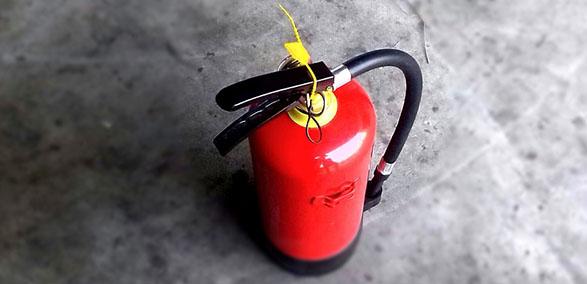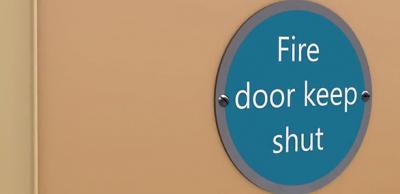The fire extinguisher: 200 years and counting
It's 200 years since Captain George William Manby invented the "Extincteur" in 1818. It was the first ever portable pressurised fire extinguisher and was a copper vessel with three gallons of pearl ash (potassium carbonate) solution contained within compressed air.
Today the most common 9 litre (just under 2 gallons) extinguishers are a familiar sight in most buildings and provide an option for first aid firefighting if it’s safe to do so. Some cynics would argue that they've been propping open fire doors ever since!
Which fire extinguisher is suitable for which type of fire?
What’s on the outside of the fire extinguisher can be just as important as what’s inside. That’s because using a fire extinguisher for the wrong type of fire can be very dangerous. Standard colour coding has been put into place to prevent this happening...
Why is colour coding necessary?
In a fire situation, time is of the essence and there is rarely enough time to read labels or look for key words. Plus, smoke or heat can reduce visibility so it can be difficult to see what’s written on the canister. So, a quick look at the colour is a much more effective way of knowing whether or not the extinguisher is the right one for the type of fire.
All UK fire extinguishers should comply with British Standards and now are manufactured in a signal red canister, the type of extinguisher is signified by a panel of a different colour.
Fire extinguisher types
Water fire extinguishers: Are completely red without any other colour panel. These extinguishers are used only for Class A fires such as paper, wood, or fabric.
Foam fire extinguishers: Foam-based extinguishers have a cream-coloured panel above the canister’s instructions. Foam extinguishers are used to combat Class A and Class B fires. (Class B fires include flammable liquids such as petroleum, oil, gasoline and propane.)
Dry powder fire extinguishers: Dry powder extinguishers are used for Class A, B and C fires. (Class C fires refer to gas fires, butane, methane, etc). They are also effective on electrical fires. These extinguishers have a blue panel above the instructions.
CO2 fire extinguishers: Class B and electrical fires should be combated by a carbon dioxide-based fire extinguisher. A CO2 extinguisher has a black panel above the instructions.
Wet chemical fire extinguishers: The contents of a wet chemical fire extinguisher are specially designed to counter a cooking oil fire (known as a Class F fire). These fires tend to spread uncontrollably if the wrong extinguisher is used. You can tell a wet chemical fire extinguisher from others by a bright yellow panel above the instructions.
Other important things to look for on the extinguisher
- The CE stamp (European Conformity) to EN 1866-1 mobile fire extinguishers
- BSI – British Standards Institute kitemark or other third party accredited scheme
- Date and year of manufacture
- No physical damage
- Operational tags still intact
- Either placed on a stand or fixed to a wall
And congratulations to Captain Manby for his revolutionary invention that has helped to reduce fire damage for two centuries!
Interested in the subject?
Try What's the difference between fire proof and fire resistant? and 5 step fire door check
Sign up to the building bulletin newsletter
Over 48,000 construction professionals have already signed up for the LABC Building Bulletin.
Join them and receive useful tips, practical technical information and industry news by email once every 6 weeks.
Subscribe to the Building Bulletin




Comments
Ychwanegu sylw newydd